Search
Did you mean: Ramesses II?
Search Results
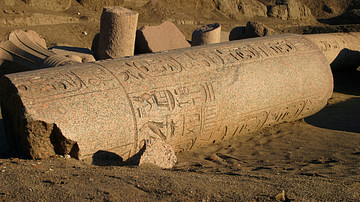
Definition
Third Intermediate Period of Egypt
The Third Intermediate Period (c. 1069-525 BCE) is the era following the New Kingdom of Egypt (c. 1570-c.1069 BCE) and preceding the Late Period (c.525-332 BCE). Egyptian history was divided into eras of 'kingdoms' and 'intermediate periods'...
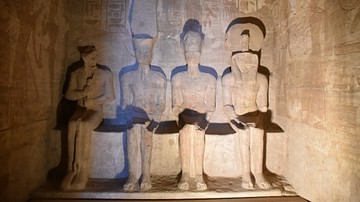
Image
Abu Simbel, Sanctuary of the Temple of Ramesses II
In the sanctuary inside the Temple of Ramesses II (Great Temple) at Abu Simbel are rock-cut sculptures of four seated figures: Ra-Horakhty, the deified king Ramesses, and the gods Amun Ra and Ptah. The architects of ancient Egypt in the 13th...
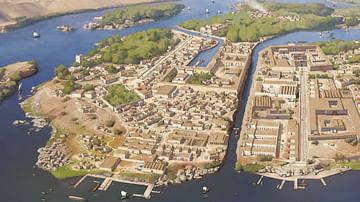
Image
Reconstruction of Pi-Ramesses
Reconstruction of the Egyptian capital of Pi-Ramesses, established by Ramesses II (1279-1213 BCE) in the 13th Century BCE. Illustration by Rocío Espin.
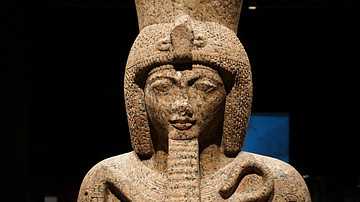
Image
Statue of Ramesses II
This granite statue of Ramesses II was discovered at the Temple of Khnum, Elephantine, Egypt (1280 BCE). Ramesses II was a very successful ruler between around 1279-1213 BCE. Here he holds a crook and flail and wears a double crown, symbolising...
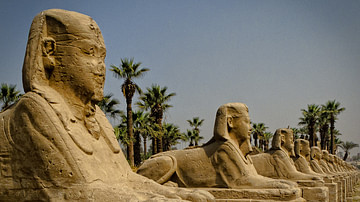
Definition
Thebes (Egypt)
Thebes was the capital of Egypt during the period of the New Kingdom (c.1570-c.1069 BCE) and became an important center of worship of the god Amun (also known as Amon or Amen, a combination of the earlier gods Atum and Ra). Its sacred name...
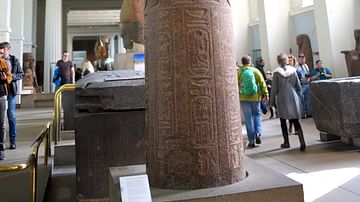
Image
Palm-leaf Column of Ramesses II from Herakleopolis
This column is from a temple primarily dedicated to he dam god Heryshef of Herakleopolis. Ramesses II is twice shown making offerings to a local form of Osiris. The god wears his typical feather crown but is in a kilt not his usual mummy...
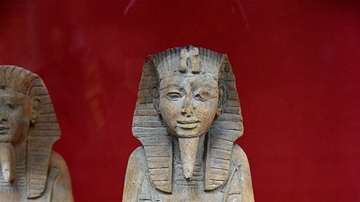
Image
Shabti of Ramesses VI
This is a wooden shabti (ushabti) of the Egyptian pharaoh Ramesses VI. New Kingdom, 20th Dynasty, reign of Ramesses VI, 1143-1136 BCE. From the tomb of Ramesses VI in the Valley of the Kings at Thebes, modern-day Egypt. (The British Museum...
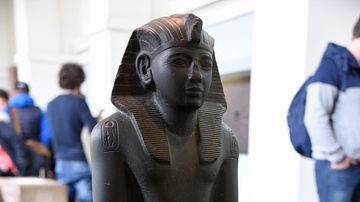
Image
Statue of King Ramesses IV
The statue shows the king offering pots of water or wine. Based on parallel statues, large parts have been restored in modern times, including the hands, posts, and knees. Cartouches enclosing Ramesses' birth and throne names appear on his...

Article
Social Structure in Ancient Egypt
The society of ancient Egypt was strictly divided into a hierarchy with the king at the top and then his vizier, the members of his court, priests and scribes, regional governors (eventually called 'nomarchs'), the generals of the military...
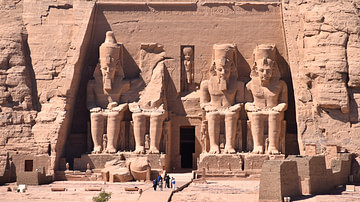
Image
Abu Simbel, Facade of the Temple of Ramesses II
The Great Temple at Abu Simbel was built by Ramesses II and completed around 1264 BCE. It stands 98 feet (30 metres) high and 115 feet (35 metres) long with four seated colossi flanking the entrance, two to each side, depicting Ramesses II...